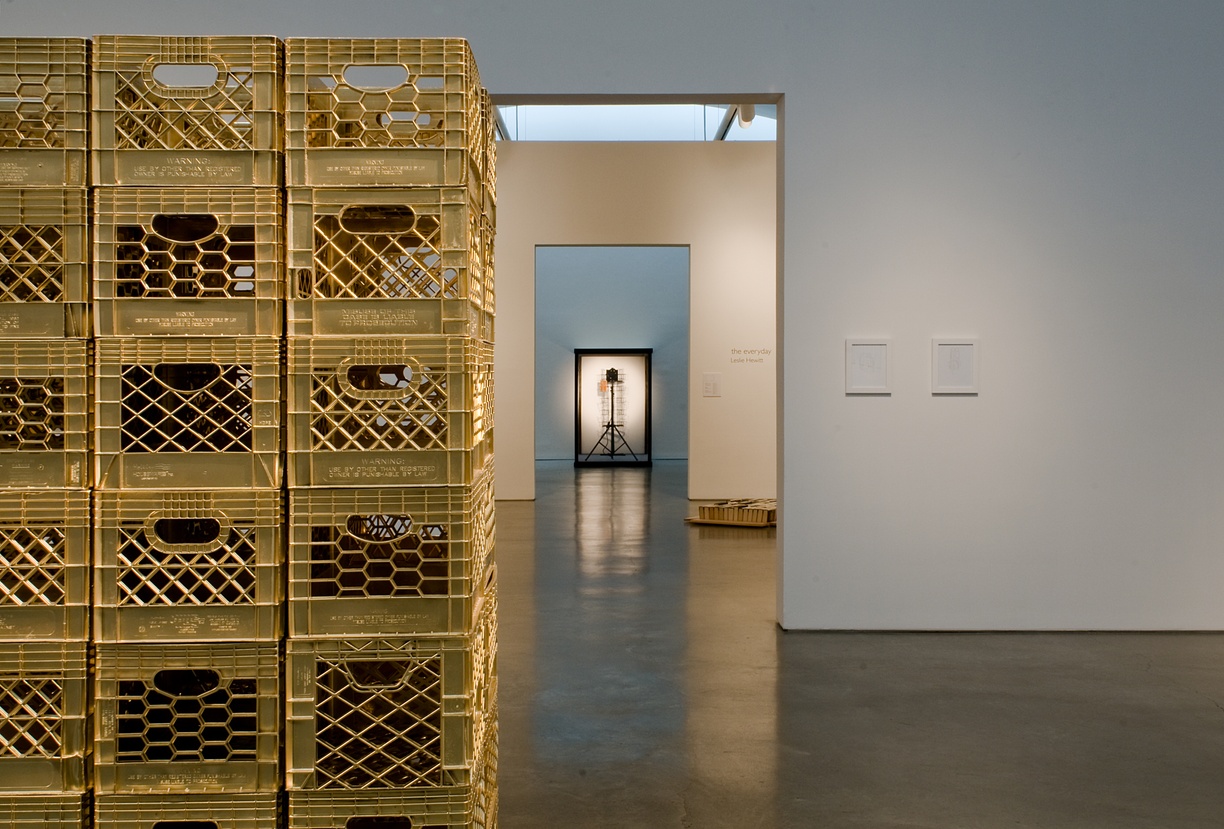
- Gene McHugh
In what is arguably the first time in the cultural history of media technology, the digital era allows the spectator to exist as a creator as much as any original author (think of Youtube, Wikipedia, and the phenomenon of blogs, etc). And while this has often been celebrated as the harbinger of some sort of ultra-clean, virtualized, technological utopia, the spectator’s privileged position in this scenario also serves to implicate him/her in the negative aspects of technological progress, as well. One of these negative aspects can be seen in the material consequences of virtual culture - all of the outmoded electronic gear piling up in trash heaps such as wires and chunks of plastic, circuit boards, screws and everything else that is required to allow electronic communication take place. As culture feasts on upgrade after upgrade, making more and more powerful machines and gadgets available in faster and faster increments, the equipment that was hot even less than a year ago becomes junk – a burden waiting to be forgotten.
The works of the artist Marisa Olson exhibited in Noise Pollution, a Master’s thesis exhibition at the Center for Curatorial Studies, Bard College curated by Gene McHugh, investigate the material/environmental consequence of electronic media culture.
The once ubiquitous music storage device, the milk crate, for instance, is rendered obsolete as one upgrades their music from vinyl to MP3. That, in turn, creates a lot of empty milk crates. In a gesture of reclamation, Olson has created Monuments to DJ Culture #2 (2009), a large sculpture featuring a palette of milk crates painted gold – “Fort Knox style” – and then framed within the walls of the art museum as Sol Lewitt-esque grid sculptures.
Similarly, the ongoing Time Capsules series of sculptures applies the same strategy to another form of forgotten media storage – the cassette tape - painting the cassettes in gaudy, solid gold paint and again referencing a lineage of minimalist sculpture. However, whereas Lewitt, Donald Judd and their Minimalist compatriots were interested in, amongst other themes, the endless, standardized seriality of industrial-scale production, Olson’s works ironically applies this language to the endless glut of minimally designed garbage mounting in the wake of technological progress.
In the video Golden Oldies (2006), Olson tries to combine a potpourri of electronic media from different generations of technologies, eventually creating a mess. Despite her best attempts to “instigate communication” between the devices, it is impossible and ultimately frustratingly sad to see the detritus of her efforts pile up in direct correlation with her efforts to somehow organize the machines. For this exhibition, Olson will embed the video in an old boombox to create a monitor/sculpture hybrid.
As in Golden Oldies, the video Dark Stars (2006), attempts to “instigate communication” between different generations of technologies (in this case, a contemporary computer and original Nintendo video game system). We see a digital image of Andy Warhol and Jean-Michel Basquiat transposed into a video game tutorial prompting the user to “make this star disappear” or “make this star barely visible.” As Olson describes it, the video “alludes to the shared vocabulary of celestial and pop stardom, and the synchronized death of stars and recording media.” For Noise Pollution, Olson will be embedding the Dark Stars video into a VCR, again reclaiming an obsolete media technology as a form of museum-ready quasi-minimalist sculpture. For the first time, all of the approximately 2,000 and counting images of the ongoing IMG_FAN found Internet image archive will be installed in a gallery space. In the case of these images, the pollution is more informational than environmental (although by taking up server space, the images are creating a carbon footprint). Since January, 2006, Olson has been seeking out those seemingly banal images that appear in blog posts, spam advertising or news items. She is extending their life span and accounting for new typologies of Internet-specific images. Lastly, the ongoing Monitor Tracings series depicts framed drawings of obsolete technologies (walkmen, old telephones, Nintendos) traced from images projected onto the screen of contemporary computer monitors. In these pieces, Olson is again combining different generations of technology and referencing the history of media change involving those instruments like the camera obscura, slide projector and overhead projector that have assisted artists in creating mimetic works.
Marisa and Gene are excited about this exhibition. Gene would like to thank the faculty, students and staff of the Center for Curatorial Studies, Bard College, his friends and family, especially, Johanna Burton, Lauren Cornell, Maria Lind, Elan Bogarin, Christina Linden, Kari Altmann, Marcia Acita and Jamie Henderson. In addition, Marisa would like to thank Michael Mandiberg, Esther Bell, Mylinh Trieu Nguyen and David Horvitz (ASDF), Vance Wellenstein, Matt Langan-Peck, Clara Jo, Katya Grokhobsky, Cory Arcangel, Thomas Galloway, Sherry Millner and Ernie Larsen, Jon Cohrs, Patrik Davison, Billy Rennenkamp, Ceci Moss, Michael Sarff and Christina Ray.
THE ARTIST
Marisa Olson (b. 1977 in Augsburg, Germany) is a new media artist, curator, critic, and media theorist. She has exhibited her work in the Whitney Museum of American Art, the New Museum of Contemporary Art, the Pacific Film Archive, and the New York Underground Film Festival. She has organized exhibitions and programs at the Guggenheim, SFMOMA, the Getty, White Columns, Artists Space, the Yerba Buena Center for the Arts, and elsewhere, including SF Camerawork, where she was previously Associate Director. She’s written for Wired, Mute, Afterimage, Flash Art, ArtReview, and others, and has written commissioned essays for the Walker Art Center, the Banff Centre’s New Media Institute, Eyebeam, and LACMA. She is the Curator-at-Large for Rhizome.org at the New Museum.
Noise Pollution is curated by Gene McHugh as part of the requirements for the master of arts degree in curatorial studies.
Student curated exhibitions at CCS Bard are made possible with support from the Rebecca and Martin Eisenberg Student Exhibition Fund; Mitzi and Warren Eisenberg; and the Patrons, Supporters, and Friends of the Center for Curatorial Studies. Special thanks to the Robert Mapplethorpe Foundation.








